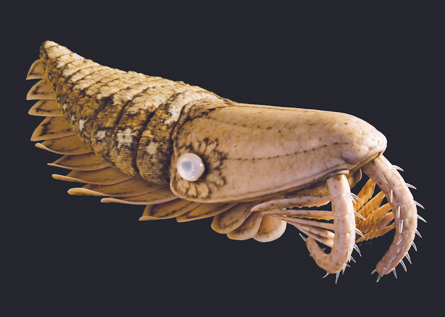Life
Ancient weirdos roamed seas longer than thought, plus clever turtle embryos and da Vinci’s tree patterns in this week’s news
Weird giants kept on swimming
The biggest beasts known from the great evolutionary explosion of animal life about 540 million years ago, the anomalocarids, apparently did not know they were supposed to be extinct icons of their era, instead surviving some 30 million years longer than paleontologists had realized. Fossils of these marine invertebrates, which roughly resemble swimming empanadas with coat hooks in front, appear in Moroccan rock dating to a mere 488 to 472 million years ago, researchers from the University of Ghent in Belgium and Yale University report in the May 26 Nature. The biggest of the recent trove stretched a full meter in length, about half again the size of earlier giants. —Susan Milius

Da Vinci’s trees a breeze
Patterns in branch thickness described by Leonardo da Vinci more than half a millennium ago may help strengthen trees against the wind. Da Vinci wrote that the thickness of a tree’s branches at any height, added together, is the same as the thickness of its trunk. This observation, confirmed by biologists, has long fascinated mathematicians. Now Christophe Eloy of the University of California, San Diego has calculated that this constant cross-sectional area helps trees resist bending stresses caused by wind, ice and snow, or even hanging fruit. His paper, posted online at arXiv.org on May 13, challenges other interpretations that are based on the movement of fluids through trees. —Devin Powell
Turtle embryos are no dummies
Turtle embryos have unexpected powers. Chinese soft-shelled turtle embryos moved inside their eggs toward a source of heat in a lab experiment, and when researchers shifted the heat source, the turtles shifted to follow it. Experiments outdoors also showed shifts toward warmth, researchers from China and Australia report in an upcoming Proceedings of the National Academy of Sciences. Regulating body temperature by basking in the sun or finding cool shade is familiar behavior for turtles later in life, but the tactic apparently shows up very early. —Susan Milius






